[/caption]
Today, NASA’s Earth Observatory website featured an image of activity on the Kilauea Volcano in Hawaii. The image was personally exciting for me to see — not only because I find volcanoes fascinating — but because the day before the satellite image was taken (below) I was flying directly over Kilauea in a helicopter, searching for active lava flows.
Above is an image I took of Halema’uma’u Crater on the summit of Kilauea Volcano, which has been steadily emitting a plume of sulfur dioxide and other volcanic gases for several years. We did not see active flows here, but about 120 meters (390 feet) below the pit’s opening there is a lava pond that rises and falls as magma moves underneath Kilauea. See more of my images below, where we did find some active lava flows and lots of gas emitting from the surrounding region.
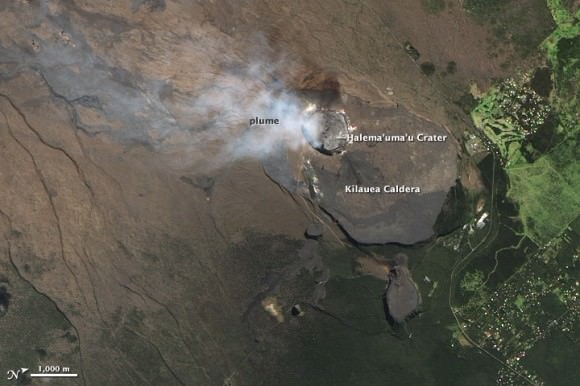
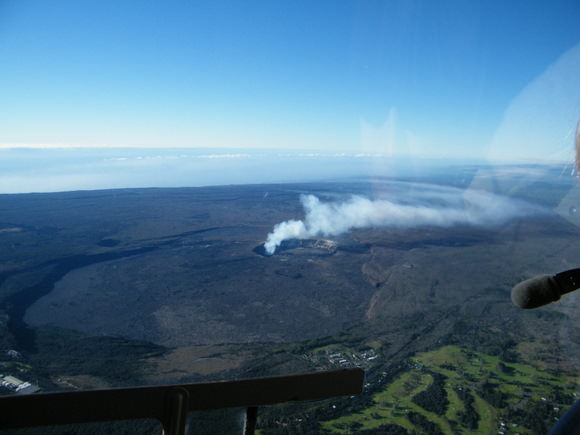
Kilauea is the youngest and southeastern most volcano on the Big Island of Hawaii. It started erupting in 1983 and has been active ever since.
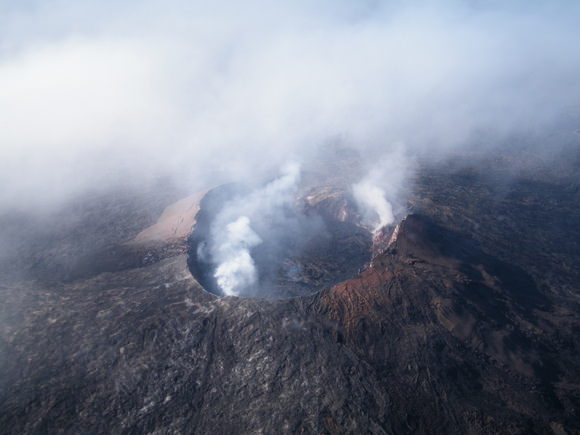
East of the summit of Kilauea is another active area, the Pu`u `O`o Crater. On January 14, we saw gas fuming throughout the crater.
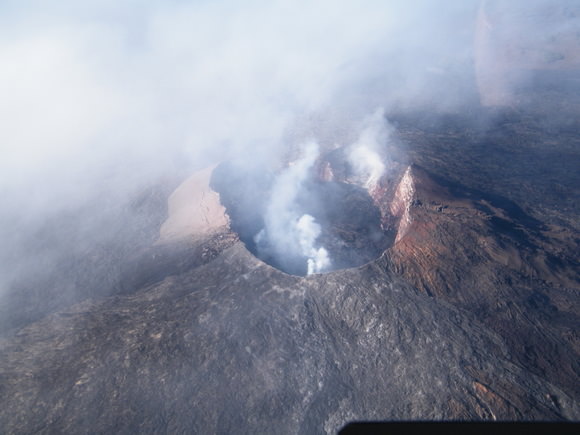
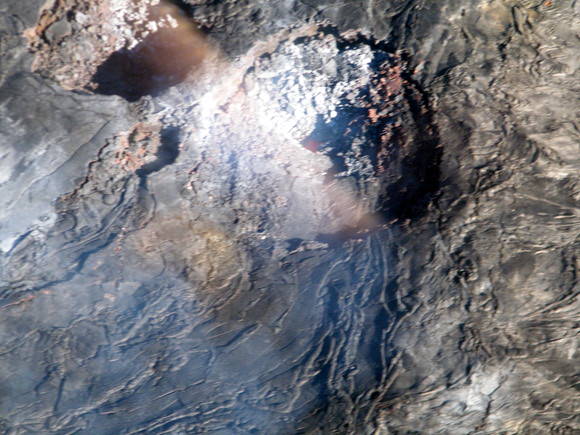
We did find one crater with active orange magma bubbling underneath the grey, hardened lava. It is a little hard to make out in the image above, as there is some glare from the helicopter window, but there are a couple of small areas of orange tint, and that is the active lava. It wasn’t much, but it was exciting to see.
We did see lots of areas of sulfur dioxide gas venting from the Kilauea region, as in the two images below. According to the USGS Hawaiian Volcano Observatory, sulfur dioxide emission rates from the summit and east rift zone vents have elevated the past few month.

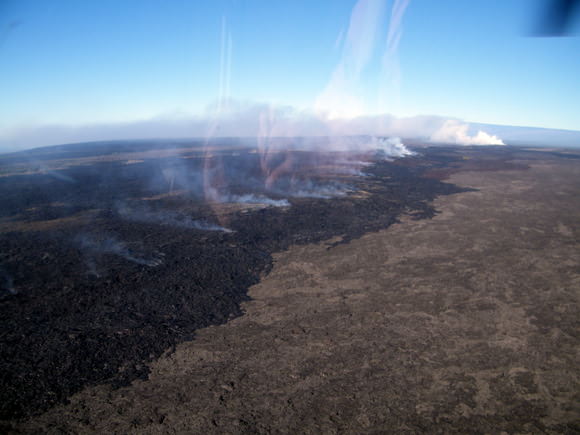
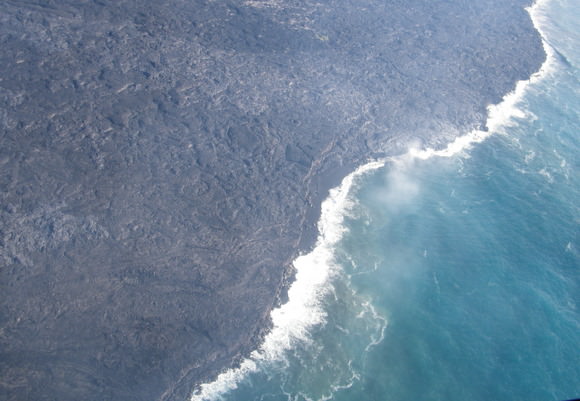
We did see a small lava flow going into the ocean. Mostly, we just saw the steam rising as the lava made contact with the cold ocean water, but every once in a while we could see an orange glow on the shore, and as fast as I clicked my camera, unfortunately I never caught the orange glow, just the steam.
Click here for a map of the Kilauea Volcano zone, and at this USGS page, you can get a daily update of activity at Kilauea.
I can highly recommend the Big Island of Hawaii as a travel destination, as within its 10,432 square km (4,028 square miles) you can find all but two of the world’s climate zones and see everything from lush rain forests to volcanic deserts, to snow-capped mountains to black and white sandy beaches. You can drive around the entire island in 6 and a half hours, or in 2 hours in a helicopter see the entire island by air.

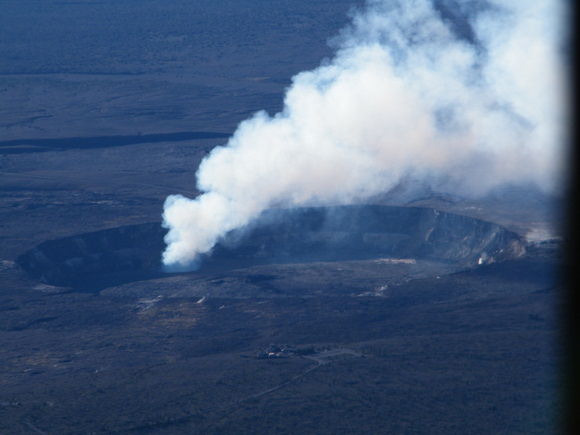
Not that it matters a whole lot, really, but you have the Pu’u O’o and Halema’uma’u craters mixed up in the photos. Halema’uma’u is the smaller puka (hole) in the large, flat frozen lava lake within a larger frozen lava lake, and Pu’u o’o is the more traditionally shaped cone vent. Love your site. Hana hou!
Thanks for setting me straight… I have changed the pictures and captions. –N
Great article Nancy !
For further information/research on volcanos, here are some websites:
http://bigthink.com/blogs/eruptions/
http://volcanism.wordpress.com/
http://blogs.agu.org/magmacumlaude/
and here are almost daily short videos of the lava flows on Hawaii: (many thanks Bo !)
http://www.youtube.com/user/LAVALOVERBO#p/u/0/xstQaazl6fE
I had no idea that the current ocean entry lava flows on Hawaii were so slow in their traverse of the landscape !
But they are relentless !
And in their inefficiency (lots of voids) they allow the plant life to regrow !